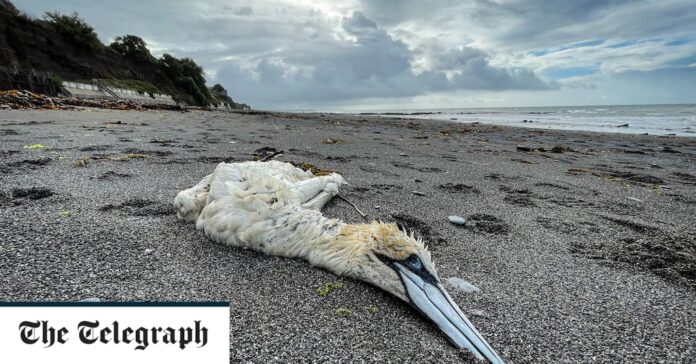With dead kittiwakes and mummified puffins littering our shores, the ruinous nature of this wildlife tragedy has never been more obvious
A pall hangs over the whinstone rocks of Inner Farne, as half a dozen or so rangers in white hazmat suits fan across the Northumbrian isle. Amid crashing waves they work in silence, carefully retrieving the corpses of birds between clumps of white sea campion – a flower that in folklore has long been regarded as a harbinger of death.
They scoop up the bodies of kittiwakes, juvenile gulls and a mummified puffin. Some decomposing birds are floating in the saltwater pools that form on the rocky shore. A few solitary adult gulls are dotted about: huddled down, shaking slightly and seemingly unperturbed by the humans in their midst. These, the rangers say, are as sure signs of infection as a red cross painted on a door.
In total, over the course of a few hours, 412 birds are collected using litter pickers and left in plastic rubble sacks by the island’s wooden jetty, to be ferried back to the mainland for incineration. Overlooking this bleak scene is the Chapel of St Cuthbert, originally built in the 14th century (and restored in the 19th century) in honour of the former Bishop of Lindisfarne who lived as a hermit on Inner Farne for years and died here in 687. Famously, St Cuthbert formed a close relationship with the seabirds that for centuries have called these islands home. He prohibited the collection of eggs from nests and when squalls blew in over the North Sea ensured shelter for the birds on the island. The eider ducks, which still nest here, are even known as ‘Cuddy’s ducks’ in tribute to the saint.
Over recent months, however, this sanctuary has become a morgue as a lethal and highly contagious strain of avian flu has decimated breeding bird populations as part of the most severe outbreak ever recorded in the UK and elsewhere. Across the entire Farnes, an archipelago of two dozen or so islands (depending on the tides) cleaved out of chunks of volcanic rock, nearly 5,700 dead birds have been collected over the course of this summer.


